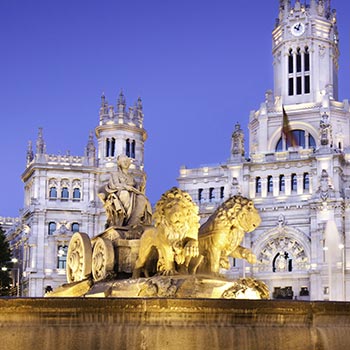Institutional Information
Engineering & Social Sciences Program
Madrid, Spain
Dates: 8/30/25 - 12/20/25

Institutional Information
OVERVIEW
CEA CAPA Partner Institution: Universidad Carlos III de Madrid
Location: Madrid, Spain
Primary Subject Area: Journalism
Instruction in: English
Course Code: 13287
Transcript Source: Partner Institution
Course Details: Level 400
Recommended Semester Credits: 3
Contact Hours: 42
Prerequisites: Institutional Information (Corporate Communication) is a course of the last year of the Degree. It has a special humanistic and multidisciplinary character (Journalism, Advertising, Sociology, Anthropology, History, Economy, Literature, Art). Therefore it is advisable to have passed all the subjects of the previous courses.
DESCRIPTION
1. Introduction
What is Corporate Communication? Differences with Advertising and Marketing. Origins and historical development. The current distrust in institutions and the importance of active citizens. Basic conceptual map: self-image, intentional image and perceived image; visibility, notoriety and influence. Image vs. reputation. Communication models in the network society. The Cluetrain Manifesto in Corporate Communication.
2.- Relationship with media
How is the corporate communication department of an institution? How are the external communication agencies? The communication director, the press chief and the external consultant. The relationship with media. Calls and press conferences, press releases, interviews, publicity. The press room. Different digital platforms for different messages and audiences. The training of spokespersons and the personal brand of executives.
3.- Internal Communication
Origins. Objectives and signs of identity: sense of membership, storage and updating of knowledge, location and maintenance of talent, dissipation of rumors. Intranets, wikis, internal blogs, microblogging and apps.
4.- The corporate visual identity
How to transmit intangibles through a graphic system. Names, logos, isotypes, imagotypes, isologos, emblems. Main and secondary identifiers. Quality parameters. Typography. The CVI manual
5.- Corporate Social Responsibility
How do institutions acquire commitments of ethical behavior? Sponsorship and patronage.
6.- Political communication
Models of political communication in the network-society. Political speech vs. conversation with citizens. Leadership communication.
7.- Crisis communication
What is a crisis? What is a crisis cabinet and how it works? Members, roles and responsibilities. The Crisis Management Plan (CMP).
8.- The strategic communication plan
Audits and plan models. To create a community, to generate expectations, to satisfy them.
9.- Transmedia and storytelling
New narratives based on classic models.
10.- Influence of digital marketing in corporate communication
Tools for measurement. SEO and ROI. New roles and competences
What is Corporate Communication? Differences with Advertising and Marketing. Origins and historical development. The current distrust in institutions and the importance of active citizens. Basic conceptual map: self-image, intentional image and perceived image; visibility, notoriety and influence. Image vs. reputation. Communication models in the network society. The Cluetrain Manifesto in Corporate Communication.
2.- Relationship with media
How is the corporate communication department of an institution? How are the external communication agencies? The communication director, the press chief and the external consultant. The relationship with media. Calls and press conferences, press releases, interviews, publicity. The press room. Different digital platforms for different messages and audiences. The training of spokespersons and the personal brand of executives.
3.- Internal Communication
Origins. Objectives and signs of identity: sense of membership, storage and updating of knowledge, location and maintenance of talent, dissipation of rumors. Intranets, wikis, internal blogs, microblogging and apps.
4.- The corporate visual identity
How to transmit intangibles through a graphic system. Names, logos, isotypes, imagotypes, isologos, emblems. Main and secondary identifiers. Quality parameters. Typography. The CVI manual
5.- Corporate Social Responsibility
How do institutions acquire commitments of ethical behavior? Sponsorship and patronage.
6.- Political communication
Models of political communication in the network-society. Political speech vs. conversation with citizens. Leadership communication.
7.- Crisis communication
What is a crisis? What is a crisis cabinet and how it works? Members, roles and responsibilities. The Crisis Management Plan (CMP).
8.- The strategic communication plan
Audits and plan models. To create a community, to generate expectations, to satisfy them.
9.- Transmedia and storytelling
New narratives based on classic models.
10.- Influence of digital marketing in corporate communication
Tools for measurement. SEO and ROI. New roles and competences










